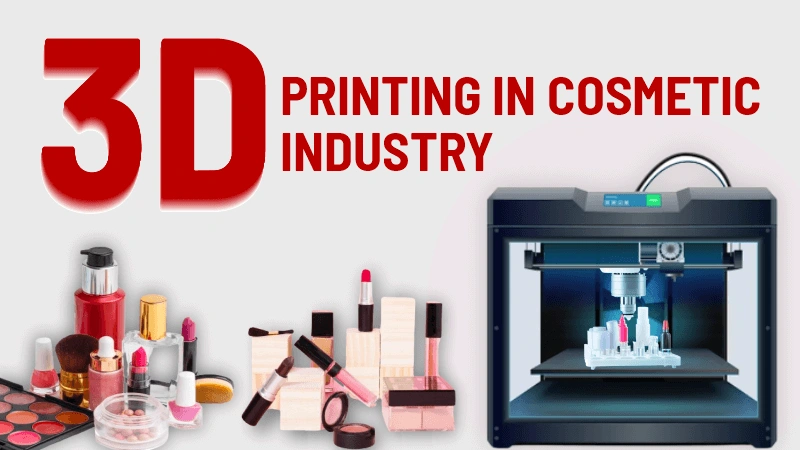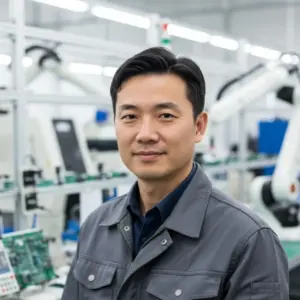The beauty industry is on the brink of a technological revolution. With advancements in artificial intelligence, biotechnology, and 3D printing, the future of cosmetics is becoming increasingly personalized, efficient, and futuristic. Imagine a world where you can 3D-print your own foundation at home, analyze your skin with AI-powered devices, or create customized skincare formulations tailored to your DNA. This once-fantastical vision is rapidly approaching reality. So, what does the future hold for beauty enthusiasts and cosmetic brands alike?
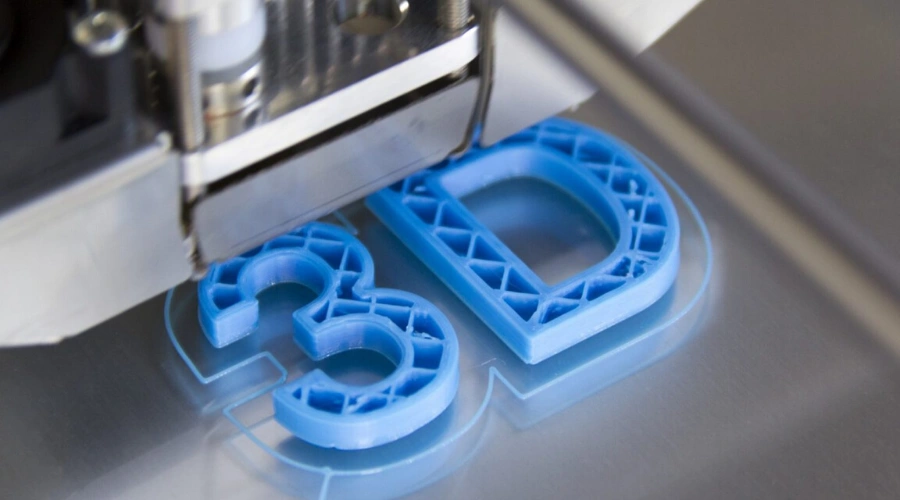
1. The Science Behind 3D-Printed Makeup
3D printing in cosmetics relies on inkjet printing and micro-layering technologies to deposit pigment and product onto a surface—such as a compact, a mask, or even directly onto the skin. The beauty industry is experimenting with two main approaches:
Pigment-based 3D Printing
This technique employs color cartridges similar to those in inkjet printers to mix and dispense precise amounts of pigment onto a makeup substrate. The Mink 3D makeup printer exemplifies this technology, allowing users to print any color onto a blank palette. The process works as follows:
1.A substrate coated with powder is inserted into the printer.
2.The printer deposits ink onto the powder-coated substrate.
3.The powder absorbs the ink, creating an instantly wearable cosmetic product.
This method enables the creation of various makeup products, including eyeshadows, blushes, face powders, and eyebrow powders.
Formulation-based 3D Printing
This more advanced approach involves printing entire skincare or makeup formulations, including active ingredients, using specialized materials. Researchers are exploring ways to print customized foundation textures with integrated skincare benefits, offering a blend of coverage and treatment in one product.
Key aspects of 3D-printed makeup technology include:
1.Customization: 3D scanning technology captures detailed facial information, allowing for truly personalized products.
2.Rapid prototyping: Beauty brands can quickly produce highly detailed prototypes at a fraction of the cost and time compared to traditional methods.
3.Sustainability: 3D printing can reduce waste by creating precise amounts of product and using recyclable materials.
4.Innovation in formulations: Companies like Chanel have developed 3D bioprinted skin to better understand skin imperfections and create more effective skincare products.
5.Diverse applications: From custom-fit makeup applicators to personalized packaging, 3D printing is transforming various aspects of the beauty industry.
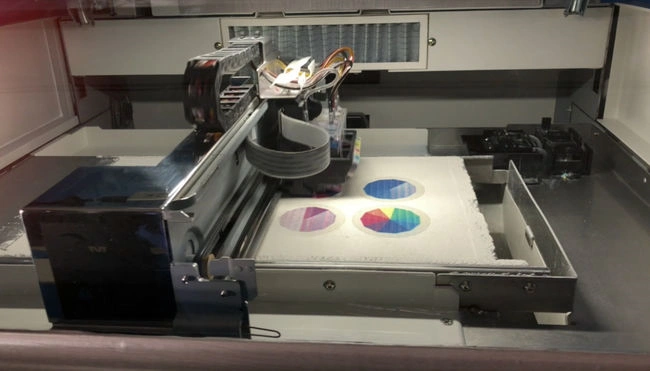
Industry Leaders and Their Innovations
Several leading companies have made significant strides in 3D-printed beauty and personalized skincare technologies:
1.Chanel: A Breakthrough in Skincare Innovation
This cutting-edge innovation enables the brand to study skin imperfections, test formulations more effectively, and develop highly targeted skincare solutions. By using bioprinting techniques, Chanel can reproduce multiple layers of skin, including the epidermis and dermis, ensuring an accurate representation of real skin behavior.
Key Advantages:
- Enhanced Skincare Research
The bioprinted skin mimics real human skin, allowing Chanel to analyze how aging, pollution, and active ingredients affect the skin’s structure and function.
- Ethical & Sustainable Testing
This technology eliminates the need for animal testing, aligning with global sustainability and cruelty-free initiatives while ensuring reliable product testing.
- More Effective Skincare Formulations
By testing products on bioprinted skin that replicates different skin types, Chanel can refine formulations for improved performance and suitability across diverse skin tones and conditions.
- Accelerated Innovation
With controlled and reproducible testing environments, Chanel can speed up the research and development process, bringing scientifically advanced skincare products to market faster.
- Personalized Beauty Solutions
By incorporating different skin characteristics, including variations in hydration, elasticity, and pigmentation, Chanel can create targeted solutions that address specific consumer needs.
2.L’Oréal: Bioprinting & Artificial Skin Research
L’Oréal is heavily investing in bioprinting technology to advance skin care, dermatology, and potential medical applications.
Artificial Skin Innovations:
- Bioprinted skin that “feels” sensations – Mimics the sensory properties of human skin, potentially allowing for realistic product testing and new skincare formulations.
- Simulating Skin Conditions – Working on models that replicate eczema, acne, tanning, and aging, allowing for advanced dermatological research.
Cutting-Edge Techniques:
- Melt Electro Writing (MEW): A technique that enables the creation of multi-layered synthetic skin by precisely depositing fine fibers, mimicking real skin structure.
- University of Oregon Collaboration: L’Oréal is working with researchers to explore sensory feedback for artificial skin, potentially leading to advancements in haptics and biomedical applications.
Potential Applications:
- VBeyond cosmetics, L’Oréal’s work in bioprinting could benefit medical fields such as wound healing, prosthetics, and skin grafts for burn victims.
- Improves ethical alternatives to animal testing by enabling highly accurate lab-grown skin models for product safety testing.
3.Mink: Consumer 3D Makeup Printing
Mink is a pioneer in consumer-accessible 3D printing for cosmetics, aiming to revolutionize how users create and customize makeup.
Core Technology:
- Uses pigment-based 3D printing technology to deposit colorants onto a powder-coated substrate.
- Converts any digital image (from photos, social media, or online color references) into a physical makeup product with accurate color reproduction.
- Prints eyeshadow, blush, face powders, and eyebrow powders directly onto a carrier sheet for immediate use.
Key Benefits:
- Personalized Beauty: Users can create unique shades not available in traditional retail stores.
- On-Demand Printing: Reduces waste by enabling small-batch or single-use cosmetic creation.

The Benefits of 3D-Printed Makeup
The integration of 3D printing into the beauty industry offers numerous advantages:
Unmatched Personalization
- Consumers can create bespoke makeup shades and formulations tailored to their skin tone and skincare needs.
- 3D scanning technology captures detailed facial information, allowing for truly personalized products.
- Custom-fit makeup applicators can be designed to match individual facial contours.
Reduced Waste
- 3D printing can generate up to 70–90% less production scrap compared to traditional manufacturing methods.
- On-demand production eliminates the need for large inventories, reducing waste from obsolete or unsold products.
- Precise material usage during prototyping leads to less waste in the development phase.
Innovative Formulations
- 3D-printed makeup can incorporate active ingredients, creating multifunctional products that combine makeup and skincare.
- Companies are exploring the use of 3D printing to create custom-made serums and moisturizers based on individual skin analysis.
Streamlined Supply Chains
- 3D printing allows for on-demand production, reducing the need for large-scale manufacturing and inventory storage.
- Localized production can significantly reduce shipping costs and lead times.
- Digital inventories and distributed manufacturing enable quick production of parts or products at the point of need.
Additional Benefits
- Faster prototyping and product development, allowing companies to bring new products to market more quickly.
- Potential for cruelty-free beauty products by revolutionizing cosmetic testing methods.
- Enhanced sustainability through the use of eco-friendly materials and reduced packaging waste.
These advantages demonstrate how 3D printing is transforming the beauty industry, offering unprecedented levels of customization, efficiency, and sustainability.
Challenges and Future Outlook
Despite the promising advancements in 3D-printed makeup, the technology still faces several challenges that need to be addressed before widespread adoption:
Challenges
- Regulatory approvals: Ensuring 3D-printed cosmetics meet safety and quality standards set by regulatory bodies.
- Material compatibility: Developing safe, stable, and effective ingredients suitable for 3D printing.
- Printing speed: Improving the speed of 3D printers to make on-demand production more feasible.
- Cost: Reducing the initial investment costs for both manufacturers and consumers.
- Consumer awareness: Educating customers about the benefits and applications of 3D-printed cosmetics.
Future Outlook
As technology advances, we can expect:
- More sophisticated printers capable of creating fully customized beauty products at home or in-store.
- Integration of AI and machine learning for highly personalized formulations.
- Expansion of 3D-printed cosmetics beyond makeup to include skincare and haircare products.
- Increased focus on sustainable and eco-friendly materials for 3D-printed cosmetics.
- Collaborations between tech firms and beauty brands to drive innovation in at-home devices.
The future of cosmetics may soon be shaped layer by layer by 3D printers, as the demand for sustainable, tailored beauty solutions continues to grow. Ongoing research and innovation in this field are likely to revolutionize the beauty industry, offering unprecedented levels of personalization and efficiency.

2. The Future of At-Home Skincare Labs
At-home skincare labs are evolving through AI-driven personalization. Key innovations include:
AI-Powered Skin Analysis
1.L’ Oréal’s Perso :
Real-time personalization: Combines ModiFace AI skin analysis (pore size, wrinkles, hydration) with environmental data (pollution, UV index, humidity) to create custom serums, moisturizers, and foundation.
Four-step process:
- Facial scan via smartphone app.
- Environmental assessment using Breezometer geo-location.
- User input on skincare priorities (e.g., dark spots, elasticity).
- Patented cartridge system dispenses personalized formulas.
Future evolution: The 2025 Cell BioPrint device uses proteomics to analyze protein biomarkers and predict skin’s biological age and responsiveness to ingredients.
2.SmartSKN’s K-OWN :
- AI-driven platform lets users mix bases, active ingredients (e.g., niacinamide, retinol), and adjust oil levels.
- On-demand 3D-printed formulations via “skincare robots” that produce products in minutes.
- Clinically proven results: 100% user satisfaction in trials for hydration, pigmentation reduction, and elasticity.
3.Other Tools:
- Cetaphil and Vichy offer browser-based AI skin analysis for redness, oiliness, and wrinkles.
- mirrAR’s AI Skin Scanner generates real-time product recommendations using deep learning algorithms trained on millions of images.
DNA-Based Skincare Customization
1. Neutrogena’s MaskiD:Personalized 3D-Printed Skincare Masks
Neutrogena’s MaskiD is a revolutionary 3D-printed personalized skincare mask designed to deliver targeted skincare treatments based on an individual’s unique skin needs. This innovation utilizes AI-powered skin analysis and customized hydrogel masks, ensuring that every user receives a treatment tailored to their specific facial zones.
Core Innovation:
- AI & Facial Mapping Technology- Users scan their faces using a smartphone app, which analyzes skin conditions such as dryness, fine lines, and dark spots.
- 3D-Printed Hydrogel Mask- Based on the analysis, a custom hydrogel mask is 3D-printed with precise concentrations of active ingredients, applied in specific areas for maximum effectiveness.
- Targeted Skincare Delivery- Unlike traditional sheet masks, MaskiD ensures that each zone of the face receives the exact treatment it needs, optimizing skincare results.
Advantages:
- Personalized Skincare- The technology tailors treatments to an individual’s skin needs, making skincare more effective.
- Precision in Ingredient Application- Each section of the mask contains different active ingredients suited to specific concerns, ensuring optimal results.
- Sustainability & Efficiency- By using 3D printing, MaskiD reduces excess product usage and waste, making it a more sustainable approach to skincare.
- Convenience & Accessibility- Users can create a custom skincare experience from home using their smartphone, bridging the gap between dermatology and at-home beauty routines.
- Innovative Consumer Experience- The integration of AI and skincare enhances the personalization trend, positioning Neutrogena at the forefront of beauty tech advancements.
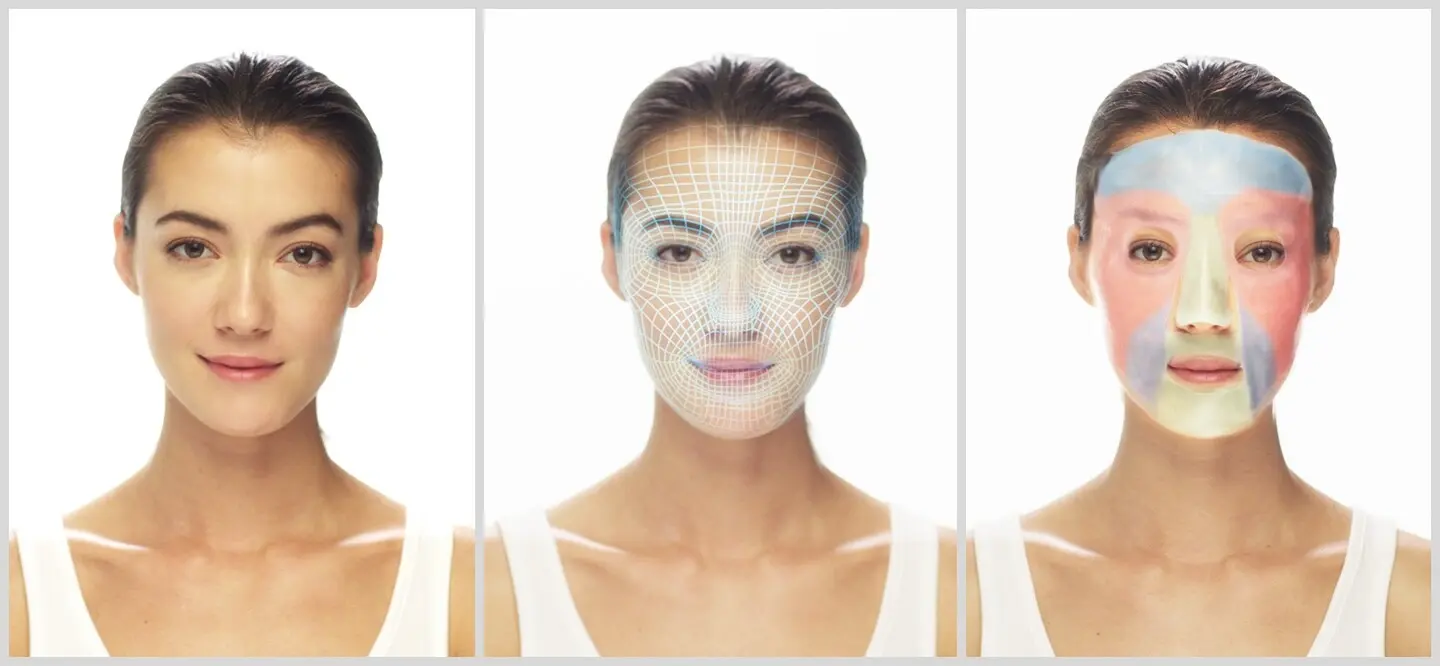
2. SkinDNA™:The Science of Personalized Skincare Through Genetic Testing
Core Innovation:
- Genetic Skin Profiling- SkinDNA™ analyzes over 15 genetic markers linked to skin aging, hydration, collagen breakdown, pigmentation, and oxidative stress.
- Predictive Skincare Insights- By understanding an individual;s genetic predisposition, the technology helps users proactively address potential skin concerns before they appear.
- Customized Skincare Regimens- Based on the genetic results, SkinDNA™ recommends personalized skincare ingredients and treatments that align with an individual’s biological needs.
Advantages:
- Proactive Anti-Aging Approach- Helps users prevent skin damage rather than just treating it after it occurs.
- Precision Skincare- Recommends targeted ingredients that match an individual’s genetic profile, eliminating guesswork in skincare routines.
- Enhanced Treatment Efficacy- Increases the effectiveness of skincare by aligning products with genetic factors like collagen degradation rates or antioxidant deficiencies.
- Sustainability & Cost Efficiency- Reduces waste by preventing trial-and-error purchases of ineffective products, making skincare more sustainable and cost-effective.
- Scientific Validation- Based on peer-reviewed dermatological research, SkinDNA™ integrates advanced biotechnology and skincare science for data-driven beauty solutions.
3. SkinGenie:AI-Powered Personalized Skincare Analysis
SkinGenie is an innovative AI-driven skincare analysis platform that provides personalized skincare recommendations based on an individual’s skin type, environmental factors, and lifestyle habits. By leveraging artificial intelligence, SkinGenie delivers customized beauty solutions, making skincare more effective and tailored to individual needs.
Core Innovation:
- AI-Powered Skin Assessment- Uses machine learning and facial recognition technology to analyze skin conditions such as hydration levels, fine lines, pigmentation, and texture.
- Big Data & Environmental Integration- Factors in weather conditions, pollution levels, and UV exposure to offer skincare recommendations that adapt to an individual’s living environment.
- Personalized Product Matching- Generates customized skincare routines by recommending products suited to the user’s unique skin concerns and external influences.
Advantages:
- Tailored Skincare Solutions- Ensures precise product recommendations based on real-time skin analysis, reducing the need for trial-and-error.
- Adaptability to Environmental Changes- Adjusts skincare recommendations according to climate, pollution, and seasonal shifts, making routines more effective.
- Data-Driven Accuracy- Uses AI and dermatological insights to refine skincare routines, improving efficacy and user satisfaction.
- Convenience & AccessibilityOffers a digital, at-home skincare consultation, making personalized skincare more affordable and available to a broader audience.
- Sustainability & Reduced Waste- Minimizes unnecessary purchases by directing users to products that truly suit their skin needs, contributing to a more sustainable beauty industry.
Smart Beauty Devices
1. LED Light Therapy Masks:
- CurrentBody Series 2 : Uses 236 LEDs (633nm red, 830nm near-infrared, 1072nm deep infrared) to boost collagen and reduce wrinkles. Clinically proven results in 4 weeks.
- Nanoleaf Mask : FDA-certified with 7 treatment modes (acne, aging). Iit uses red/NIR light for skin rejuvenation.
- FOREO FAQ™ 202 : Wireless, flexible silicone mask with 600 LEDs. Reduces wrinkles by 32% in 2 weeks.
2. Microcurrent & AI Integration:
- SmartSKN PRO : Combines AI analysis with Korean plant-powered ingredients (e.g., cica, centella asiatica) for customizable K-beauty regimens.
- Therabody’s TheraFace Mask: Though not AI-driven yet, highlights the trend toward professional-grade at-home devices.
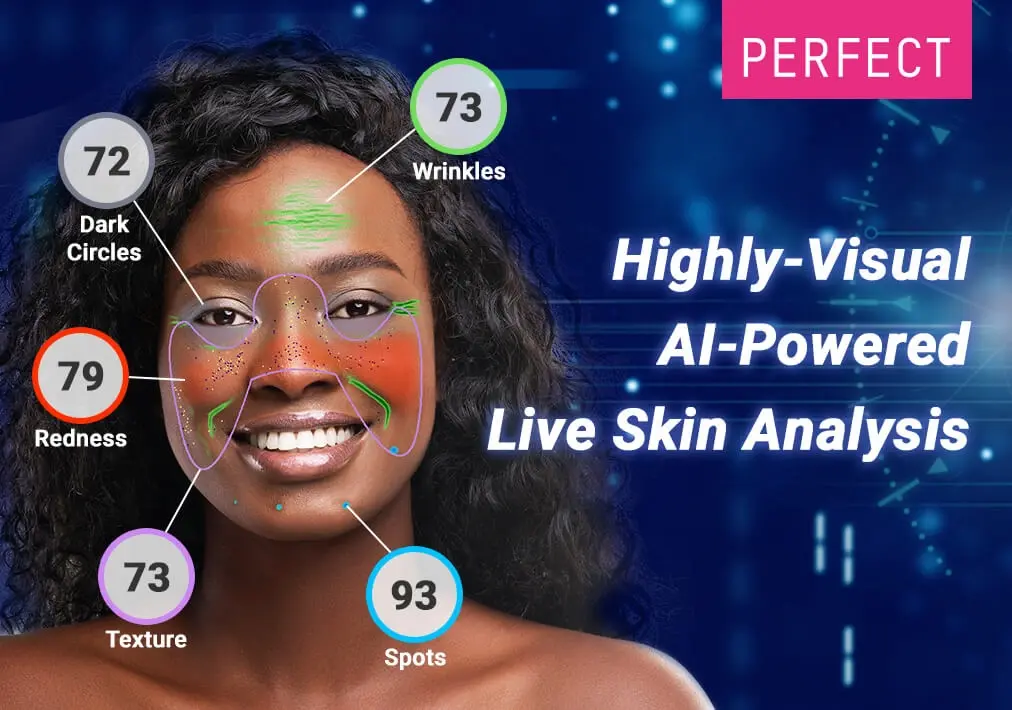
3. Sustainability and Ethical Beauty Innovations
One of the most promising aspects of these technological advancements is their potential to reduce waste and promote sustainability. 3D printing makeup reduces packaging waste, while personalized skincare minimizes the need for mass-produced products that may not suit everyone. Additionally, biotechnology is paving the way for lab-grown ingredients that replace environmentally harmful raw materials.
For example, brands are now exploring lab-grown collagen and bioengineered botanical extracts, which provide the same benefits as their natural counterparts without depleting resources. AI-powered beauty apps also help consumers make more informed purchasing decisions, reducing overconsumption and product waste.
4. The Potential Impact on the Beauty Industry
The rise of 3D-printed cosmetics and personalized skincare is transforming the beauty industry by reducing waste, enhancing sustainability, and shifting control from brands to consumers. This innovation challenges conventional mass production models, offering a more customized and eco-conscious approach to beauty.
Key Disruptions in the Beauty Industry
- Minimized Waste & Overproduction – Traditional beauty brands produce products in bulk, often leading to unsold inventory and unnecessary waste. With 3D printing, consumers can create only the amount they need, drastically reducing excess production and disposal.
- Sustainability & Reduced Packaging – The shift from pre-made products to on-demand printing eliminates excessive packaging, cutting down on plastic waste and carbon footprints linked to shipping and storage.
- Consumer Empowerment & Hyper-Personalization – Instead of buying pre-formulated products, customers can design their own skincare and makeup, adjusting ingredients, shades, and textures to fit their unique needs—all from home or through brand-partnered kiosks.
- Decentralized Beauty Market – With 3D printing and AI-driven skincare, independent creators and small brands gain more opportunities to innovate, challenging established beauty giants and democratizing product creation.
- On-Demand Beauty Retail – The shift towards custom production means fewer stocked shelves and a rise in beauty tech hubs, where consumers can print, blend, or formulate their own products instantly.
5. The Challenges and Ethical Considerations
While these innovations are exciting, they come with challenges. 3D-printed cosmetics and AI-powered skincare devices may be expensive initially, making them inaccessible to some consumers. Additionally, privacy concerns regarding AI-driven skincare analysis and DNA-based customization must be addressed to protect user data.
Moreover, the shift toward technology-driven beauty may disrupt traditional cosmetic industries. Brands will need to adapt by integrating these innovations into their product lines or risk being left behind.
6. The Future is Now
Although we’re not yet at the point where every household has a 3D makeup printer or a fully automated skincare lab, the foundation is being laid. Within the next decade, we can expect to see more brands incorporating AI, biotechnology, and 3D printing into their product offerings, giving consumers unprecedented control over their beauty routines.
The question is no longer if these advancements will happen—it’s when. As beauty merges with technology, the future of cosmetics promises to be more personalized, sustainable, and revolutionary than ever before.
Would you embrace the idea of printing your makeup at home or using AI to design your perfect skincare regimen? The future of beauty is in our hands.
